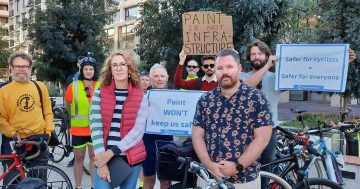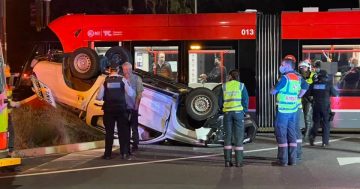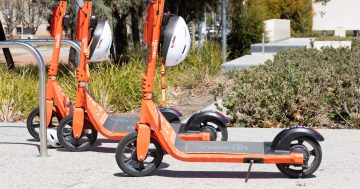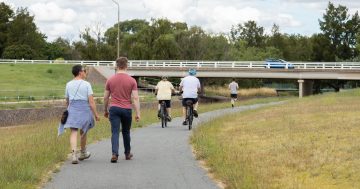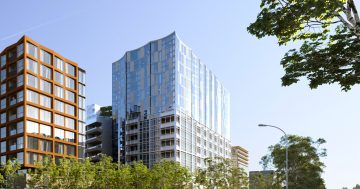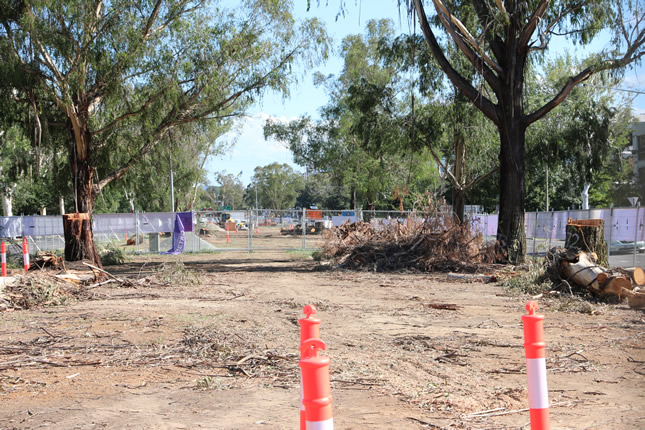
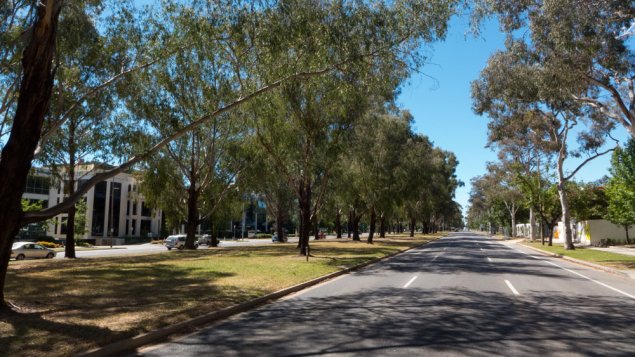
Canberra’s central business district is divided by a fifty-metre wide roadway that is set to become even more dangerous, and even more dysfunctional.
Northbourne Avenue’s six general traffic lanes, two shared paths and two cycle lanes will soon be joined by two light rail tracks. Fifteen thousand light rail passengers will use the Alinga Street terminus each day. Passengers travelling to or from north of the terminus will have to negotiate Canberra’s most dangerous place for pedestrians – the intersection of Northbourne Avenue with Bunda and Rudd Streets.
Pedestrian crossings currently connect only to the east and west. But light rail passengers will want to travel in all directions, especially south-east to the bus interchange. Better pedestrian crossings could improve safety, allow quicker bus-tram connections, and help the Government to increase the public transport share of all work trips to 16% by 2026.
Northbourne Avenue is dangerous for pedestrians. It’s the only part of a major shopping area in the ACT where pedestrians face vehicles travelling legally at 60 km/h. Two pedestrians have been killed on Northbourne Avenue since 2006. The Territory’s three most dangerous locations for pedestrian injuries are the intersections of Northbourne Avenue with Bunda and Rudd Streets, with Macarthur and Wakefield Avenues, and with London Circuit. It might be even worse, but for traffic signal improvements that reduced the number of risky crossings.
Northbourne Avenue is dangerous for cyclists. Its intersection with Morphett Street in Dickson is the ACT’s worst location for cyclist injuries. Six of the seven most dangerous locations are along Northbourne Avenue.
Northbourne Avenue is also dangerous for motor vehicles. It averages a crash every two days, and an injury a month. The intersection of Northbourne Avenue with Barry Drive and Cooyong Street had 61 crashes and four injuries during 2013 and 2014.
Walter and Marion Griffin designed Northbourne Avenue for a city that would not need traffic signals because only a few of its 30,000 inhabitants would own cars. They would have designed Northbourne Avenue very differently if they had anticipated that Canberra would have 240,000 passenger vehicles and 300 signalised intersections. Its wide medians mean that most pedestrians crossing to the diagonally opposite corner of a Northbourne Avenue intersection have to wait at a red signal before commencing to cross the side road, wait at another red signal before starting to cross Northbourne Avenue, and then wait at a third red signal before completing their crossing. At the intersections with London Circuit, with Alinga Street, and with Rudd and Bunda Streets, vehicles turning right have to wait at up to two red signals.
Northbourne Avenue’s wide medians mean six less seconds of traffic signal green time, per cycle, than at normal intersections. Reduced green time has a disproportionate effect on peak period congestion delays.
Northbourne Avenue’s intersection with Rudd and Bunda Streets is the epicentre of Canberra’s morning congestion. Traffic banks up from there until it blocks the intersection with Barry Drive and Cooyong Street. This causes a kilometre-long cascade of congestion, that partly blocks every intersection back to Ipima Street.
The parkland along the centre of Northbourne Avenue has twice the total area of Glebe Park. But few people use it because it’s all within fifteen metres of the noise, fumes and danger of three lanes of 60 km/h traffic.
Planning Minister Mick Gentleman said that he intended to create environments that are child- and age-friendly and support cycling and walking, and noted that community and stakeholders emphasised the need to adopt a placemaking approach that focuses on pedestrians first, cyclists second, public transport third than private vehicles.
How can we apply those principles to make Northbourne Avenue a safer, more efficient, and more enjoyable space?
Leon Arundell is Chair of Living Streets Canberra.
















